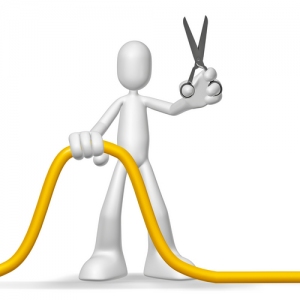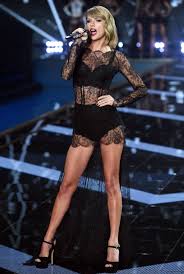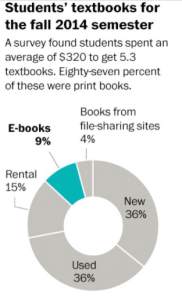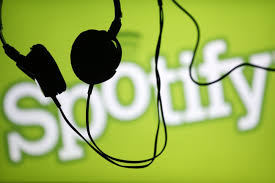Do College Textbook books stand a chance against the E-book?
That’ll be 384$ the lady at the cashier stand says.
384$?! For two books?
Since when did text books become so expensive?
Already grappling with skyrocketing tuition and fees, college students also must contend with triple-digit inflation on the price of textbooks. The average student finds themselves “shelling out $1,200 a year just on books” states an article on Nbc.com.
So E-book must be the better choice right? Who could possible want to pay hundreds of dollars to carry around a 25 pound backpack.
“Instead of carrying around a bunch of books, you have one device with everything on it,” said a 23-year-old student who also uses the digital textbook’s added tools like flash cards and an online journal that keeps track of the material he’s highlighted. “It’s just much more efficient”, he says.
It seems like in every classroom students are becoming more more digitalized easing into the transition of an E-book filled world.
According to an article in the Daily Beast, “Slightly more than half of college students also said they preferred reading digital textbooks over printed ones for class”.
Efficiency AND cost effective are the two terms used to describe the purchases of E-books on every campus.
The E-book industry also understands that in order to be successful it must appeal to every type of consumer which is why start-up companies are now beginning to explore many digital options when it comes to text books, further expanding the acceptance of E-books.
For example : Kno and Inkling, another startup, are producing interactive textbooks, taking what was once static words and illustrations and adding features such as videos, audio, self-assessment quizzes and the ability to share notes with friends.
But even though the thought of an E-book can seem promising, there have been many studies conducted that show quite the contrary.
In fact, this chart shows that the love for print as well as digital is divided equally.
According to the article: “ Why college students still prefer print over e-books” the author states that we are not quite there yet in terms of “usability, visual presentation and navigation tools”. The pilot program pointed out some glaring flaws in the e-reader model: Students reported problems with readability, complained of eyestrain, and said the e-books were not fully compatible with all mobile devices.
An article on the Huffington post even goes as far as to state 9 reasons why books are just way better.
So what would you choose? the e-book or the print version ?
Well according to a study conducted by the University of Washington, 25 percent of humanities students bought physical versions of free e-books. meaning that if students spend their cash on a possibly free book over booze, they must REALLY want it right?. One of the reasons that this could be is that students can connect better “emotionally” with books in the physical form says Maddie Crum from the Huffington Post.
Throw away the sleeping pills,
more books means More ZZ’Z’s
A study presented in The Guardian shows readers that E-books can actually cause people to have a harder time falling asleep? now that’s not exactly what the average college kid wants, is it. The article states that according to the research done by Harvard, they “found that the use of these devices before bedtime prolongs the time it takes to fall asleep, delays the circadian clock, suppresses levels of the sleep-promoting hormone melatonin, reduces the amount and delays the timing of REM sleep and reduces alertness the following morning”
Seems like textbooks are the healthier option.
According to an article in the Washington post,the love for textbooks is quite apparent .”Textbook makers, bookstore owners and college student surveys all say millennials still strongly prefer print for pleasure and learning, a bias that surprises reading experts given the same group’s proclivity to consume most other content digitally.”
But are Textbooks here to stay?
Some say yes, some say no
I say yes
Words are more readily memorized when read off of a physical book. Researchers say readers “remember the location of information simply by page and text layout — that, say, the key piece of dialogue was on that page early in the book with that one long paragraph and a smudge on the corner”. It is because of this that researchers think this plays a key role in comprehension.
Why would we even buy school books .. if we fail to memorize what we are reading?
But at the end of the day , I think that this will depend fully on the professor. Some Professors re- use notes year after year and tell students that they need to read pages “56-80”. If this page number is different on an E-book, chances are that the student will buy the book in order to keep up with the class … after all what is a 100 dollar textbook to a failed 4,000 dollar class. this example is seen with a student at NYU.
on purchasing E-books,Val Maharaj, a senior at New York University pursuing a double major in biology and philosophy, said that the page numbers are much different between editions. I could follow it by section but I think it’s a little more convenient to know exactly what pages the professor is assigning,” he said.
Another problem with E-books is simply convenience
“Sometimes I buy e-books because it’s cheaper,” said Anushah Hossain, a junior double majoring in economics and history at the University of California, Berkeley. Hossain said she was able to lower a $100 textbook purchase by about a third by using digital editions. But for someone who purchases an E-book, this means that they have to carry the heavy laptop, watch out it doesn’t get broken along the way, pall the while not being able to take notes or highlight things inside of it.
For now it seems like,
The student is a prisoner when it comes to books.
“Students are, in essence, a captive market,” said Ethan Senack, higher education associate at the U.S. Public Interest Research Group.
As long as teachers “prescribe” a text book, students will buy. and they will buy what the teacher wants. But it might be for the better when out weighing cost over health, memorization and ease.
RIP Cable, Can it survive?
What you want. When you want it. How you want it.
These are the words Netflix lives by, a streaming company that offers users a chance to watch their favorite shows without ads, at only around 7 dollars a month.
So how exactly is this type of service impacting the cable industry?
And why would anyone switch back to subscribing to cable, a service that :
- a) costs more
- b) bombards users with the dreaded.. ads

There is a new trend with millennials, also known as Generation-Y, that seems to show a decrease in cable subscriptions.
According to the article “Millennials and cutting the cord” written by The New York Times, nearly a fifth of younger adults just don’t subscribe.
These millennials, which account for more than a fifth of the total American TV audience of about 292 million adults and children, are considered crucial to the future of television. This is because marketers covet their high earning potential and receptivity to ads.
Easily put, the people in charge of ads aren’t targeting their target audience because youth aren’t watching.
Aren’t watching cable that is.
As stated in the article, “Millennials and Cutting the Cord”, Adults aged 18-26 are increasingly using different platforms for their entertainment such as computers, tablets and cell phones.
Meanwhile that number for television is drastically diminishing.
According to the article “The Millennial Trends that are Killing Cable” in Forbes.com, many recent events have given rise to predictions that the era of cable may in fact be coming to a close.
For one, HBO recently announced they will offer stand-alone service so customers need not have cable to enjoy what HBO has to offer.
The times they are a changin’, and not in cable’s favor
- Forbes.com
Uh oh Cable…
56% of the TV and film viewing by Millennials aged 14-24 is on computer, smartphone, tablet, or a gaming device — only 44% is via TV.
According to the article on forbes.com,on average, the 30-and-under crowd’s primary means of consuming content is through mobile devices, streaming, and online.
The article states that the trend that it sees is that since millennials enjoy using several online platforms at once, it is more likely that they will also watch their shows online vs Offline.
One thing is certain : the balance of power in the consumer-provider relationship has shifted to the consumer
This means that television networks are now adapting the way they offer their shows in a way that reflects the way in which consumers consume.
According to the Wall Street Journal, Apple plans to offer a streaming TV service that will include ABC,CBS,FOX, ESPN, and 20 other broadcast channels to start.
Because without expanding to new avenues to get closer to those Millennial consumers, HBO would risk losing them entirely, and 74 million consumers is simply too many to ignore
Adapting to the consumer has also opened a door for an a – la carte channel menu.here, consumers can pick their favorite instead of having to pay for the whole buffet. But just like at any restaurant, ordering a- la carte can be quite expensive.
Considering costs, HBO would have to lower its rates as well or once again, risk losing many customers.
But the article in Forbes magazine does shed some positive light unto the cable industry.
At the end of the day, people who watch television shoes STILL need cable so Cable companies would have to respond by playing one of the strong cards they have left in their hand: “Their role as major suppliers of Internet into homes. To get the content, you still need a way to receive it, and at-home content delivery of online and streaming content is overwhelmingly handled through cable providers”
But just how threatening is Netflix?

An article in Buisness Insider states that many companies are afraid of the business concept that Netflix uses and have begun to also use less ads. Even Time Warner’s CEO pledged to chop its “ad time” in half for primetime shows, starting next year, on its channel “truTV ( a channel dedicated to millennials and the age group that is oh so very valuable to the television industry)
The problem is that …once you go No add, you never go back.
Since young adults are used to using ad blockers on their computers and iphones , their tolerability to see ads on a show they are watching is decreasing, by the click.
But maybe not all is lost for cable TV, or is it?
Many viewing habits of these millennials changes as soon as they begin to have children
“We think behaviors could change once the so-called millennials start having families,” said Glenn B. Enoch, senior vice president for audience insights at Nielsen.
Surveys have found these hypothesis to be true,
“About 80 percent of millennials with their own homes who have started families subscribe to cable, and an additional 14 percent get television with an antenna”, according to the article in the New York Times
But even the digital realm has caught on to this cable trend where Millennials WITH kids WANT cable. According to an article in the New York Times, Outlets like Netflix and Amazon are pouring resources into acquiring and developing exclusive children’s series, knowing that can lure parents to subscribe
I personally do believe that it is a bit late for cable to win this battle against streaming but, there are a few strategy’s that can be begun in order to maybe survive or at least decline at a slower rate
For one, Cable companies would have to respond by playing one of the strong cards they have left in their hand: their role as major suppliers of Internet into homes.
Because in order to get the content, you still need a way to receive it, and at-home content delivery of online and streaming content is overwhelmingly handled through cable providers .
I also think that television channels should begin to offer online streaming services like HBO has.
Craig Moffett, an analyst who covers the sector, says that around 900,000 households in America have cut the cord in the last year or started a new household without signing up for pay-TV.
That is only around 1% of households that subscribe for cable television, according to a statement made in the Economist
And this will probably accelerate over time.
“Cord nevers”, young people who start their own households without a subscription, and who may never get one, will continue to add to the number people who don’t subscribe to cable.
An interesting point to think about is the emergence of Smart televisions in house holds. ” I watch all of my shows on a television but through the internet” says Ashley Benne, a student in Munich, Germany. Smart televisions aren’t just something for the wealthy. ” I bought my TV because it was only about 50 euros more” she says.
So will ownership trends of “smart televisions” which are internet-connected cause people to opt out of paying for cable because they can easily stream Netflix in their living rooms?
I think yes.

This chart predicts the fall of the cable empire and I must say, I kind of have to agree.
But another way in which to fight Netflix is seen with an Article in Buisness Insider.
Media moguls are beginning to notice that pairing up, and offering content with online streaming content providers such as Netflix can result in their own company going out of business.
Recent comments from James Murdoch, who heads 21st Century Fox, suggest a shift in thinking in the media giants.
“Certainly the business rules around how we sell to SVOD (subscription video on demand) providers are changing, and our thinking is evolving,”
-Murdoch
INSTEAD OF NETFLIX,
Fox has begun to deal more with Hulu, a Netflix competitor that Fox owns part of and which lets Fox control the advertising, according to Bloomberg. Fox has given Hulu exclusive rights to shows on one of its cable channels, FX.
but netfix has noticed this change which has developed to the birth of Netflix’s own shows such as “house of Cards” and “Orange is the new Black”
The median age of broadcast TV viewers is 54.2. That’s almost 20 years older than the average American.
Millennials are driving the cord-cutting trend, with one third of their original series consumption coming from digital platforms.
1/3
According to Internet analytics company, “comScore”, One in 6 hasn’t even tuned into a TV original series in the last 30 days
So there are several things that networks can do to stop this worrying trend.
Lets start with more original hours.
The Big Four broadcast networks—CBS, ABC, Fox and NBC—together with CW, are introducing a net total of five new shows to primetime this season, a” 3% increase to total original programming”, according to the UBS analysis.
In-House Production
ABC, Fox, and NBC steered away from third-party studios this season, a recent trend in the broadcast TV industry. These studios are producing almost exclusively in-house with ABC producing all of its 10 new shows either fully or partially and Fox producing 9 of 10 new shows in-house.
Because if the show’s a hit, the network receives all of the profit
Then we can supersize it : The bigger , The better
Companies such as Fox or ABC have the money to spend on their shows .
“Bigger casts, bigger sets, more special effects, and bigger budgets will lead to a 2% hike in production costs this season”, according to UBS
For Example: According to the article in the Economist, the most expensive primetime addition is NBC’s drama “Blindspot,” starring actress Jamie Alexander. With a $59 million budget for the season.
If You Can’t Beat ‘Em, Join ‘Em
While the ascent of Netlfix and similar streaming services have offered viewers an alternative to broadcast television, they’ve also opened up a potential income stream for legacy shows and newer series produced by the networks.
Leading the network/Netflix collaboration is ABC, who produced Netflix’s most recent hit “Daredevil,” in partnership with Marvel Television. This goes back to the idea that if there are no third parties involved , they will make all of the profit
Looking to the future, there’s no reason to doubt that the trend will continue to be Netflix expansion and strength, and a dominant position in the aftermath of the continued decline of traditional cable service.
The main questions are, ……
who will control the means of distribution for content, of delivering the Internet access?
“Cable companies are in the best position to retain that control for now, and how well they position themselves to strengthen their hold will determine how long they last as the trends render regular cable service obsolete”- The Economist
SpotiWHY? Is Music Streaming a Sustainable Business Model
Streaming: An All you can eat buffet for the music industry

Previously, record companies and artists may have gathered revenue through “hit” songs and record sales but now there is a new money making guy in town
Meet Mr.Streaming
According to the music business body the “British Phonographic Industry (BPI)”, Britons streamed 14.8bn tracks last year, almost double the 7.5bn of 2013, as internet connectivity improves and becomes pervasive.
This is further seen in the article “Taylor Swift and the Economics of Music as a Service”, which shows us how the industry has changed.
The Music industry has faced 40 years of disruptive technological change .
40 YEARS
So, how exactly did it all begin?
One could say that it began when vinyl records were cut to a third of the size and half the width by transforming into a C.D.
but it didn’t stop there.
Napster enabled consumers to share music files for free form the convenience of their cafes C.D’s turned digital to work with MP3 players which only opened the door to the digital downloading genius of Napster.
This way of getting songs began to work extremely well I mean,
Why buy the cow when you can get the milk for free?
But, just like a bad breakup.. instead of coming to terms with this new way of getting music, the music labels did everything in their power to fight it. Apple decided to create a platform that would sell songs for an affordable price of 99 cents, allowing people to buy their favorite songs as well as for albums to be dismantled. It seemed overnight that apple turned into a success .
It is now that the music industry has shifted to streaming..
Music services like Pandora and Spotify are taking over the music industry, where users can listen to thousands of songs for free or for a low subscription, simultaneously causing companies music sales to decline. “ World wide music sales in Apple’s iTunes store fell almost 14 % in the past year, adding to a 2.1 percent decline the previous year” states a Harvard business review.
According to the article, “Taylor swift and the Economics of Music as a Service”, digital technologies have unlocked tremendous value for consumers in ease of access, lowered acquisition costs , exposure to diverse musical genres and the ability to easily share music.
So how does streaming work?
Music has now become a service that has transformed the business from being operated on the basis of acquisition to one based on paying only for use.
Streaming music has made people believe that they don’t have to have a library of songs but they can listen to a song when they want, where they want it and how they want it.
Taylor swift, a music artist and celebrity is no stranger to the streaming business and in fact… she may be a bit greedy when it comes to it.
Earlier this year after her dispute with Apple, Swift said that she would stream her latest album “1989” with the tech giant.
This comes at quite the change seeing as swift never allowed her music to be on any streaming services.
What caused Swift to have a change of heart was how Apple changed its policies on paying royalties. After Swift called apple ‘ shocking, disappointing” , the company changed course and said it would pay during the free trials, says from the New york times
As Swift tweeted end of June,
“This is simply the first time it’s felt right in my gut to stream my album. Thank you, Apple, for your change of heart”
. – Taylor Swift

But is streaming music a sustainable business model?
According to a report published by Generator Research last November, the current business model for streaming music is in fact : “inherently unprofitable.”
Andrew Sheehy, the main author of the report, concluded: “Our analysis is that no current music subscription service—including marquee brands like Pandora, Spotify, and Rhapsody—can ever be profitable, even if they execute perfectly.”
Spotify has lost a total of $200 million since it was founded, according to a report last year based on its financial disclosures written by PrivCo, a firm that studies private company performance.
It may be that streaming music companies will work better as parts of larger businesses, just as Apple has the iTunes Store and Amazon (AMZN) sells subscription video through its Prime service
Yet YouTube itself might be a key obstacle to boosting subscriptions, because it is unofficially the world’s largest ad-supported music streaming service.
Teenagers use YouTube to find songs and related artists exactly as they do the normal streaming services. (Snapchat’s user demographic is a perfect match for that sort of service – which Vevo may seek to capitalise on.)
When Swift removed her content from streaming services, it created a media uproar – but all her songs, including new album 1989, could still be found on YouTube.
But Spotify still has hope
The founder Of Spotify, Ek, says that as long as Spotify accomplishes its main task—getting people to stream more music—free users will continue to upgrade to paid subscriptions.
“We know if you do that, you’re going to be like, ‘Hey, 10 bucks is nothing. It’s like two beers,’” he says. “In Sweden, it’s actually less than one beer.”
One beer or unlimited streams?
Sounds like we don’t need the beer afterall.
According to the following graph, streaming seams to be getting more and more profitable and it seems that it will soon surpass downloads who have gone down in revenue by 5 million dollars in the past year, but in order for streaming to be truly profitable, there must be a surge in subscribers themselves.

Seeing as The streaming industry strongly relies on paying customers, it is quite difficult to tell if there will ever be enough paying streaming subscribers to putt food on spotify’s table.
According to an article in The Guardian, The main problem is that for each song streamed, the service has to pay a set amount to the record labels; the more songs streamed, the greater the payment, creating a cost barrier that never shrinks. Spotify says it pays out 70% of its revenues to artists.
For these reasons, I do not see streaming as being a profitable business model but we must see what the future music holds.
In the current structure for the digital markets, it’s going to be hard for anyone to make real money,”
BTIG analyst Rich Greenfield.


